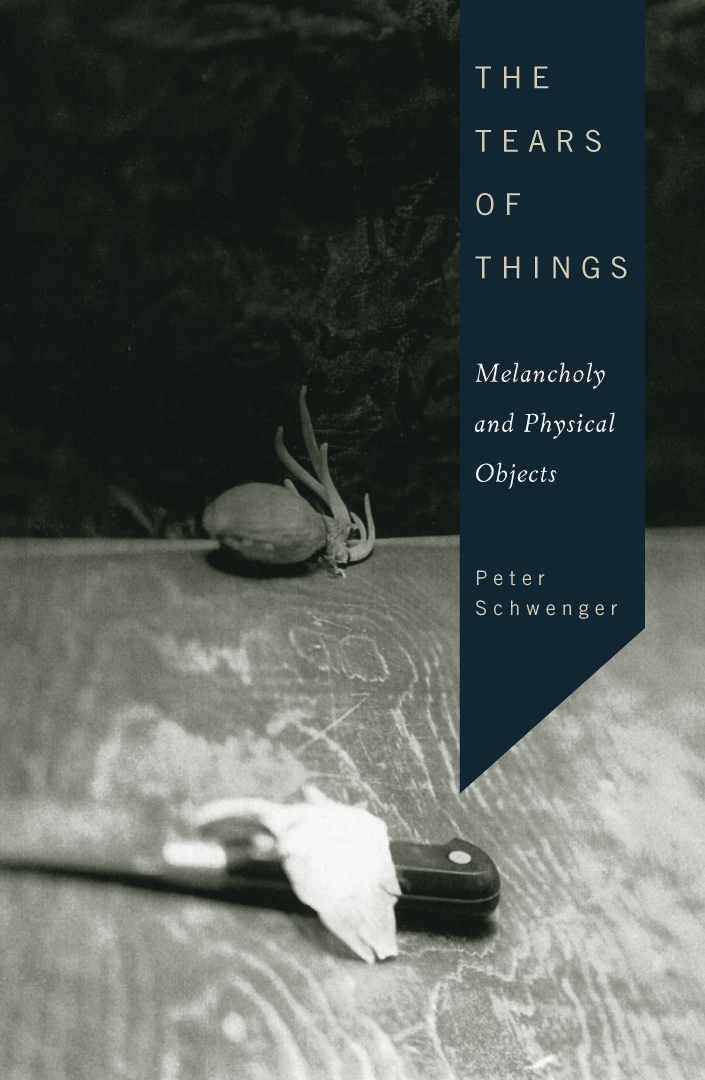
THE TEARS OF THINGS: MELANCHOLY AND PHYSICAL OBJECTS
The object as the subject’s ultimate other
We surround ourselves with things, objects that are invested with our
memories but can only stand for what we have lost. For physical objects—including
one’s own body—situate and define us; yet at the same time they
are fundamentally indifferent to us. The melancholy of this rift is a
rich source of inspiration for artists.
Peter Schwenger deftly weaves together philosophical and psychoanalytical
theory with artistic practice. Concerned in part with the act of collecting,
The Tears of Things is itself a collection of exemplary art objects—literary
and cultural attempts to control and possess things—including paintings
by Georgia O’Keefe and René Magritte; sculpture by Louise
Bourgeouis and Marcel Duchamp; Joseph Cornell’s boxes; Edward Gorey’s
graphic art; fiction by Virginia Woolf, Georges Perec, and Louise Erdrich;
the hallucinatory encyclopedias of Jorge Luis Borges and Luigi Serafini;
and the corpse photographs of Joel Peter Witkin.
However, these representations of objects perpetually fall short of our
aspirations. Schwenger examines what is left over—debris and waste—and
asks what art can make of these. What emerges is not an art that reassembles
but one that questions what it means to assemble in the first place. Included
in this catalogue of waste is that ultimate still life, the cadaver, where
the subject-object dichotomy receives its final ironic reconciliation.